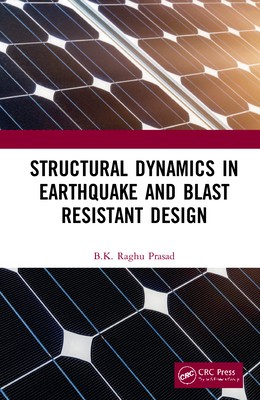| Structural Dynamics in Earthquake and Blast Resistant Design Contributor(s): Prasad, Bk Raghu (Author) |
|
 |
ISBN: 0815370180 ISBN-13: 9780815370185 Publisher: CRC Press OUR PRICE: $190.00 Product Type: Hardcover - Other Formats Published: September 2020 |
| Additional Information |
| BISAC Categories: - Technology & Engineering | Civil - Earthquake - Technology & Engineering | Structural - Technology & Engineering | Industrial Design - Product |
| Physical Information: 336 pages |
| Descriptions, Reviews, Etc. |
| Publisher Description: Focusing on the fundamentals of structural dynamics required for earthquake blast resistant design, Structural Dynamics in Earthquake and Blast Resistant Design initiates a new approach of blending a little theory with a little practical design in order to bridge this unfriendly gap, thus making the book more structural engineer-friendly. This is attempted by introducing the equations of motion followed by free and forced vibrations of SDF and MDF systems, D'Alembert's principle, Duhammel's integral, relevant impulse, pulse and sinusoidal inputs, and, most importantly, support motion and triangular pulse input required in earthquake and blast resistant designs, respectively. Responses of multistorey buildings subjected to earthquake ground motion by a well-known mode superposition technique are explained. Examples of real-size structures as they are being designed and constructed using the popular ETABS and STAAD are shown. Problems encountered in such designs while following the relevant codes of practice like IS 1893 2016 due to architectural constraints are highlighted. A very difficult constraint is in avoiding torsional modes in fundamental and first three modes, the inability to get enough mass participation, and several others. In blast resistant design the constraint is to model the blast effects on basement storeys (below ground level). The problem is in obtaining the attenuation due to the soil. Examples of inelastic hysteretic systems where top soft storey plays an important role in expending the input energy, provided it is not below a stiffer storey (as also required by IS 1893 2016), and inelastic torsional response of structures asymmetric in plan are illustrated in great detail. In both cases the concept of ductility is explained in detail. Results of response spectrum analyses of tall buildings asymmetric in plan constructed in Bengaluru using ETABS are mentioned. Application of capacity spectrum is explained and illustrated using ETABS for a tall building. Research output of retrofitting techniques is mentioned. Response spectrum analysis using PYTHON is illustrated with the hope that it could be a less expensive approach as it is an open source code. A new approach of creating a fictitious (imaginary) boundary to obtain blast loads on below-ground structures devised by the author is presented with an example. Aimed at senior undergraduates and graduates in civil engineering, earthquake engineering and structural engineering, this book: Explains in a simple manner the fundamentals of structural dynamics pertaining to earthquake and blast resistant design |